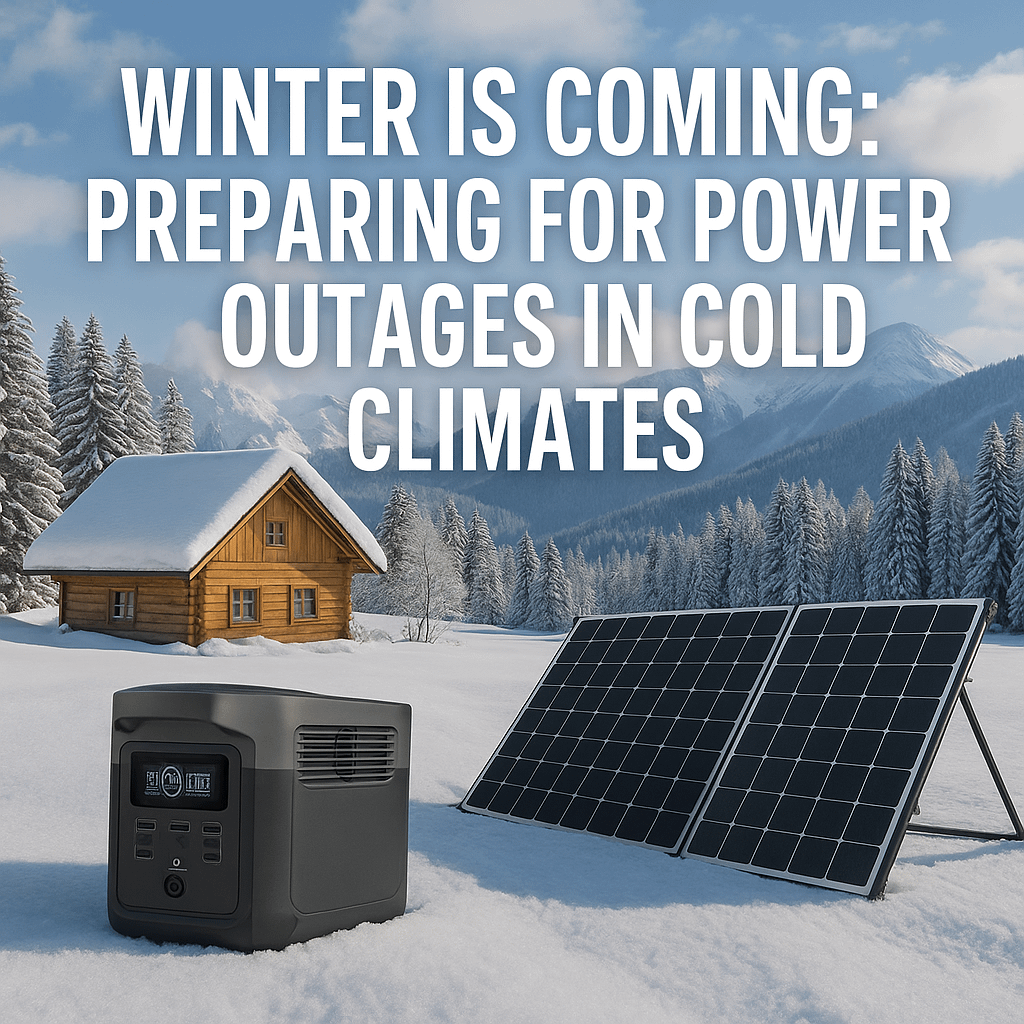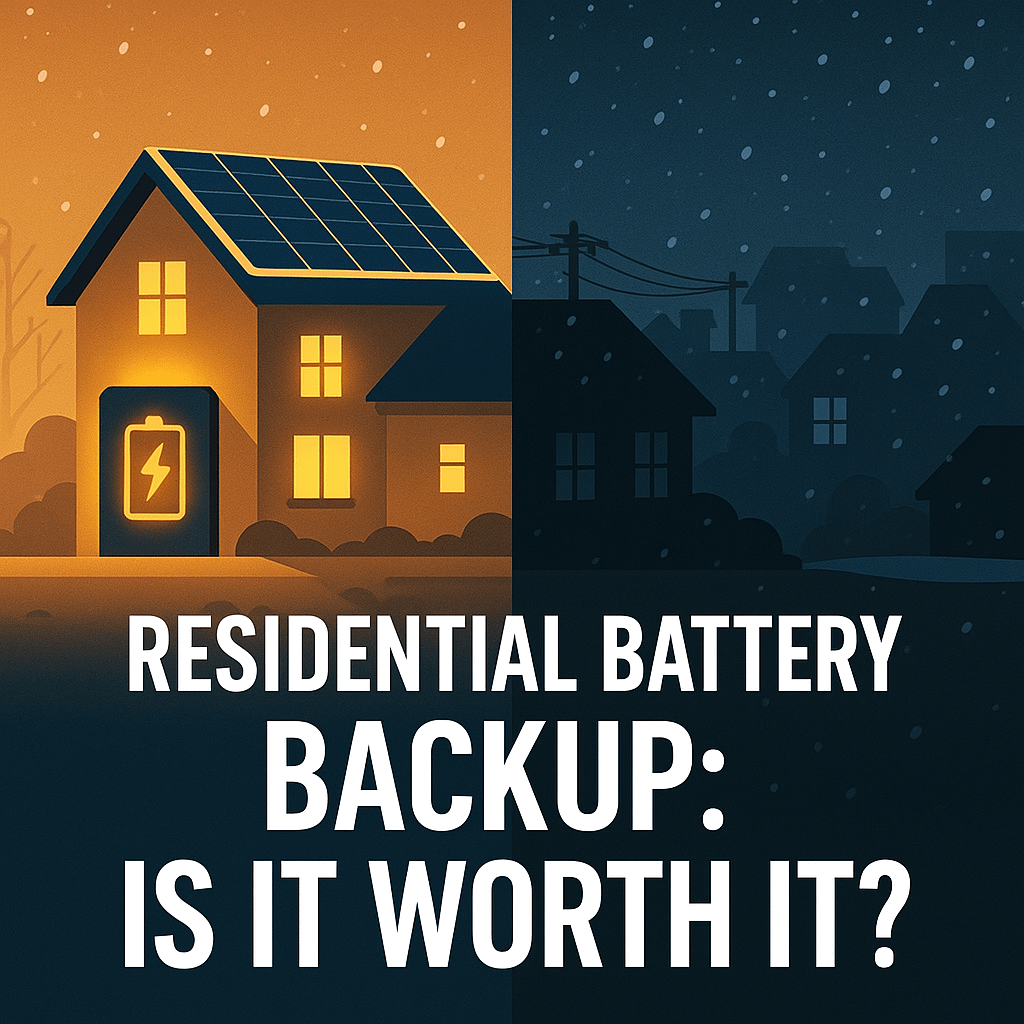Are You Prepared?
The seasons are shifting. Winter is on the doorstep, and with it comes snowstorms, ice, and the possibility of extended power outages. Most homeowners count on the grid without thinking twice—until it fails. Considering US customers, on average, lose power for less than five hours per year, that secure feeling isn’t entirely unjustified. But the truth is, a multi-day outage in freezing weather isn’t just inconvenient. It can be dangerous.
But here’s the good news: modern portable power stations give you safe, quiet, and reliable backup power to keep essentials running—without the fumes, noise, or complexity of a gas generator.
This guide will walk you through:
Why winter outages are different (and harder to endure).
What everyday essentials you can’t live without for a week.
How to choose the right-sized portable power station.
When to consider adding solar panels for resilience.
Practical “negawatt” strategies to stretch your backup power.
By the end, you’ll not only understand your risks—you’ll have a plan.
Why Winter Power Outages Are Different
A summer blackout is inconvenient, and even dangerous for folks who need power for life saving devices. But in many ways, a winter blackout can be catastrophic.
Cold temperatures: Frozen pipes, food spoilage, and hypothermia become real threats.
Longer nights: With fewer daylight hours, you’ll depend more on artificial light and battery-powered devices.
Critical systems at risk: Furnaces, sump pumps, and modern medical equipment all rely on electricity.
Prepare – Don’t be Caught Off-Guard!
While unusual, extended winter power outages are not unheard of. A grid that is reliable 99.95% of the time, is little comfort to those who find themselves in the 0.05%. Extreme winter weather events absolutely happen, and they can even happen where you would least expect it.
It’s been said, if you don’t have a plan B, then you don’t have a plan. And when it comes to power outages that sentiment rings true as ever. So if grid power is your plan A, then let’s work on solidifying a plan B, so you and your family will be prepared in the unlikely event of an extended power outage. To begin, you should be thinking about what you absolutely couldn’t live without – both figuratively, and of course, literally.
Think about your daily routines. Without power:
How would you run your CPAP machine?
Keep medications refrigerated?
Charge laptops and phones for work and school?
Stay connected with your security system?
- Provide a well lit space for activity and entertainment during the outage?
If you’re unsure, that’s where planning ahead pays dividends.
What Couldn’t You Live Without for a Week?
This is the heart of winter preparedness. Unless you can afford to back up your entire home, forget about luxuries like the espresso machine or holiday lights. Focus on essentials.
Make a list of everything in your home that you absolutely cannot go without for 7 days. For many households, that might include:
Medical and Life-Safety: CPAP machines, oxygen concentrators, refrigerated medications.
Food Security: Refrigerator, freezer, mini-fridge, small appliances for cooking.
Connectivity: Internet router, laptops, phones.
Safety and Comfort: Security systems, lighting, sump pumps, space heaters (use sparingly and low-wattage only).
This isn’t about living off-grid—it’s about maintaining normalcy and safety when the grid goes dark.
👉 Pro Tip: Anything life-safety critical should immediately push you into considering a larger portable power station paired with solar panels. Batteries alone may not last a full week without recharging.
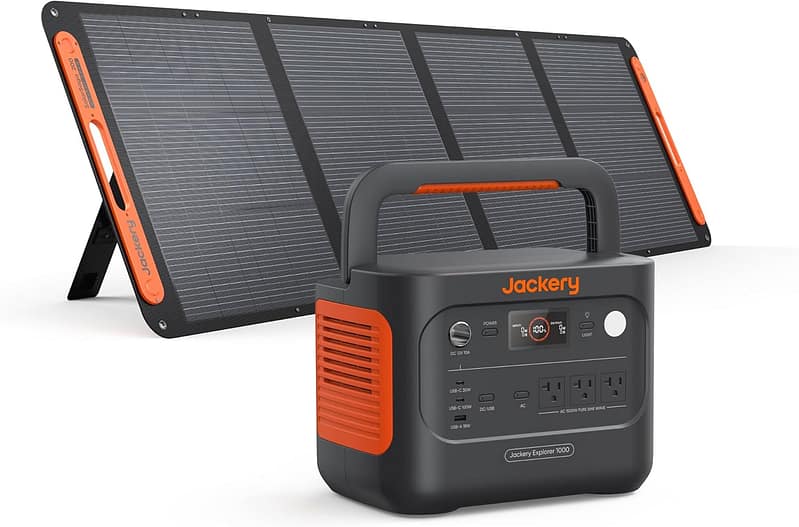
Jackery Solar Generator 1000 v2 with 200W Solar Panel,1070Wh Portable Power Station LiFePO4 Battery,1500W AC/100W USB-C Output
$1,299.00 Original price was: $1,299.00.$699.00Current price is: $699.00.
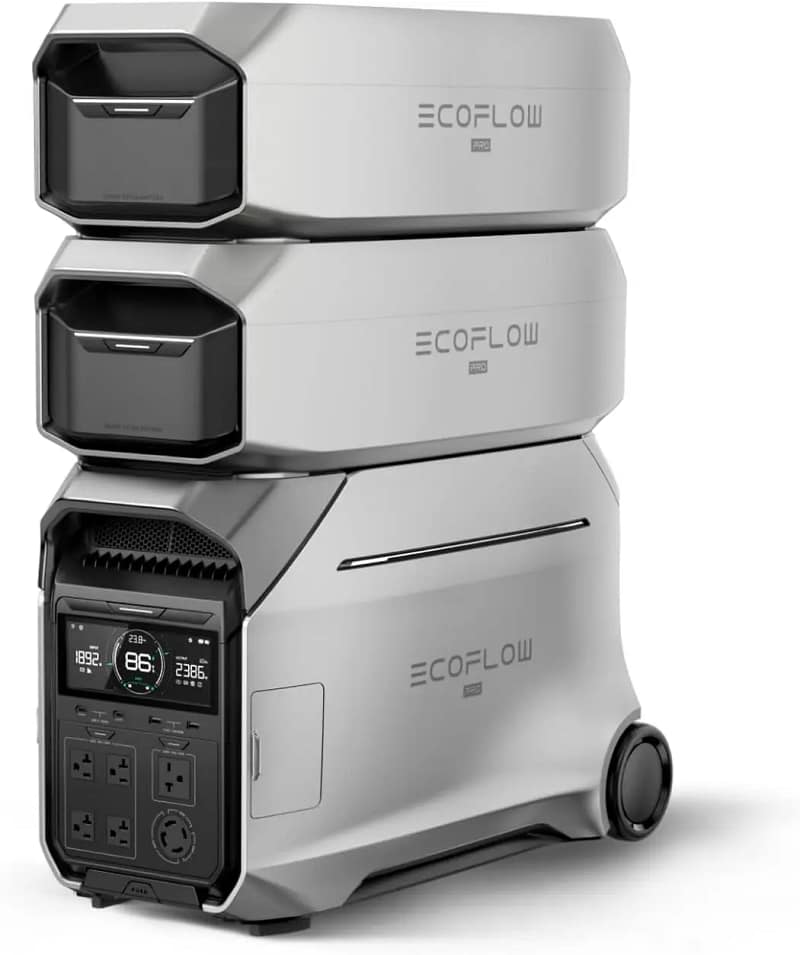
- 4000W Output (6000W with X-boost)
- 12kW Capacity
$9,599.00 Original price was: $9,599.00.$6,198.00Current price is: $6,198.00.
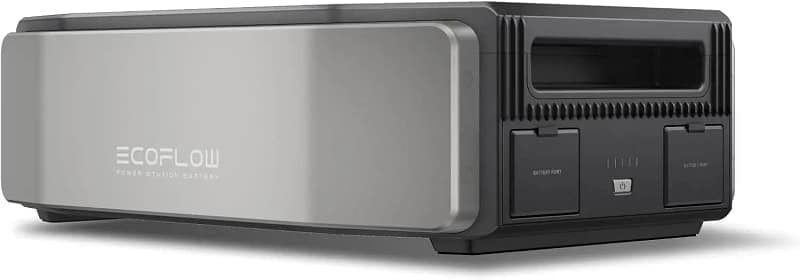
- 21kW Output!
- 90kWh Capacity!
$3,299.00 Original price was: $3,299.00.$2,299.00Current price is: $2,299.00.

- 4000W Output
- 8000Wh Capacity
$6,298.00 Original price was: $6,298.00.$4,099.00Current price is: $4,099.00.
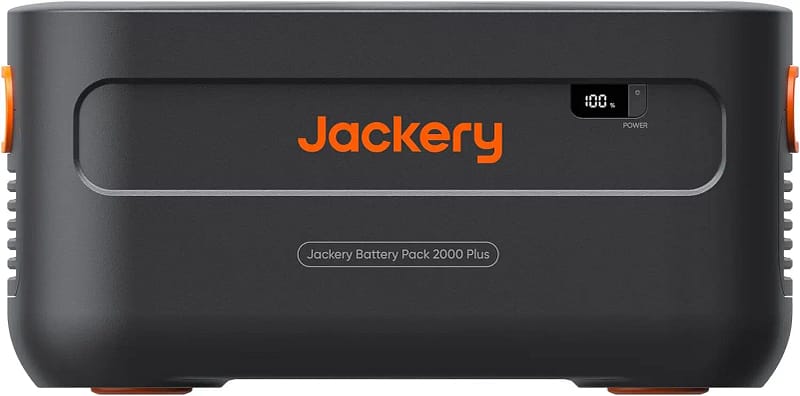
- 3000W Output
- Extra 2000 Wh Capacity
- Expandable up to 24 kWh!
$1,599.00 Original price was: $1,599.00.$929.00Current price is: $929.00.
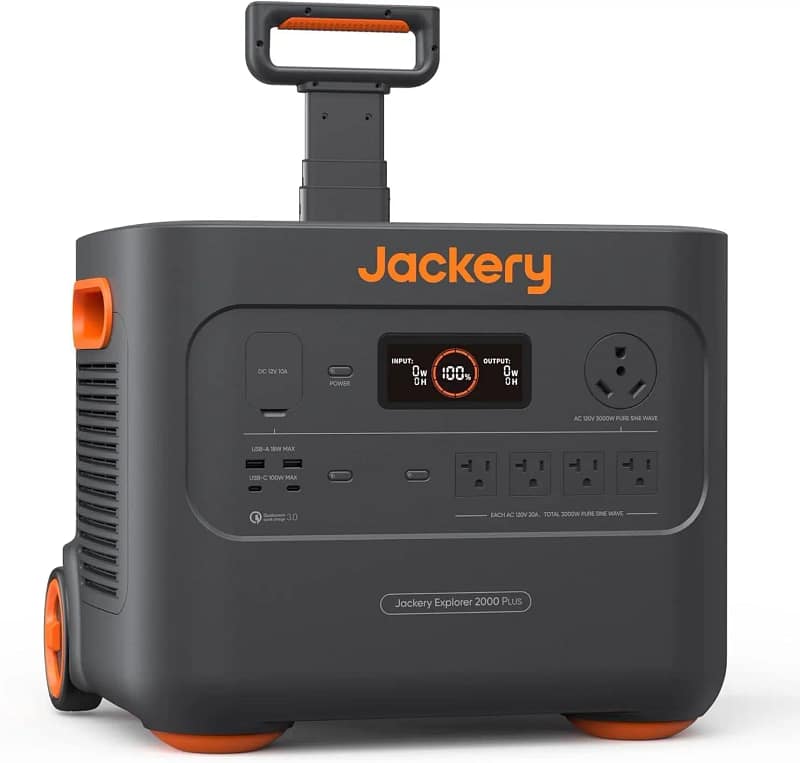
-
3000W Output
- 2,042.8 Wh Capacity
$1,999.00 Original price was: $1,999.00.$1,499.00Current price is: $1,499.00.
How to Right-Size a Portable Power Station
The most common mistake homeowners make? Buying a power station that’s too small. You fire it up, plug in your fridge and laptop, and it runs… for a couple of hours. Sometimes less.
Here’s how to avoid that disappointment:
Add Up Your Loads
Once you have your list of devices you intend to power, look at the wattage of each device (usually printed on the label). A CPAP might use ~40 watts, a laptop ~60 watts, a refrigerator ~120 watts cycling (compressor is not always running), and so on. Add them up.
Multiply by Time
If your fridge cycles 8 hours per day at 120 watts, that’s 960 watt-hours (Wh). Add all your devices’ daily totals together.
Factor in Days Without Power
If you want 3 days of backup, multiply your daily load by 3.
Size Up for Safety
Always choose a power station rated 20–30% larger than your calculated need.
💡 Shortcut: Evergreen Off-Grid offers a Portable Power Station Estimator Tool. You enter your devices, and we’ll crunch the math—then show you suggested portable power stations that match your needs.
When to Add Solar Panels
Portable power stations are amazing—but they’re not magic. Once the battery is drained, you’ll need a way to recharge it. In summer, you might limp by with a quick recharge when the grid returns. Perhaps you can drive across town for a charge. In winter? Power outages are often accompanied by snow storms. And that could mean days in the dark.
Adding solar panels creates a renewable lifeline. Even a modest 200–400 watt solar kit can stretch your battery life dramatically, even under the winter sky.
When to add solar:
You rely on medical devices.
You’re in a region prone to multi-day outages.
You want to reduce dependence on gas-powered generators.
You value quiet, safe, reliable, renewable power.
With solar, your portable station becomes a sustainable backup system—not just a short-term battery.
-
Sale!

Jackery Solar Generator 1000 v2 with 200W Solar Panel
$1,299.00Original price was: $1,299.00.$699.00Current price is: $699.00. Buy on Amazon Today! -
Sale!
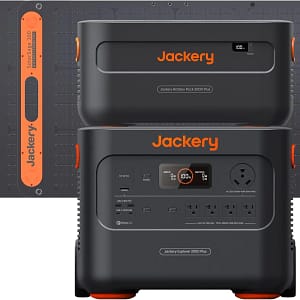
Jackery Solar Generator 4000 Kit
$4,999.00Original price was: $4,999.00.$2,799.00Current price is: $2,799.00. Buy on Amazon Today! -
Sale!

Jackery HomePower 3000 Portable Power Station
$2,999.00Original price was: $2,999.00.$1,799.00Current price is: $1,799.00. Buy on Amazon Today!
Stretching Your Backup Power with Negawatts
In the energy world, a “negawatt” is quite simply a watt you didn’t use. And in a winter outage, saved watts are as valuable as stored ones.
Practical tips for conserving power in a blackout:
Keep the Fridge Closed: Every peek lets cold air escape and forces the compressor to work harder. That blast of cold air on your face? Just think of that as energy leaking from your power station.
Zone Your Lighting: Only light the room you’re in. Stick to LEDs. This may sound so last century, but secure lights during the day and when not in use.
Ditch Phantom Loads: Unplug devices like microwaves and TVs that aren’t in use, but sip standby power 24/7.
Layer Up: Rely on clothing and blankets instead of plugging in space heaters.
Batch Charge Devices: Plug in laptops and phones at the same time to reduce idle drain.
These small adjustments can double the runtime of your portable power station.
The Safety Edge of Portable Power Stations
Why a portable power station instead of a gas generator? A few key reasons:
Indoor-Safe: No carbon monoxide risk – a common cause of death during winter power outages.
Silent Operation: No rumbling in the backyard.
Instant Start: Push a button—no messy fuel storage.
For homeowners with limited storage space or safety concerns, power stations are the smarter, cleaner choice.
Building Your Winter Energy Plan
Here’s a simple checklist to get started:
Make a list of must-have devices for 7 days.
Estimate your daily energy needs. Then multiply that by the number of days your plan will prepare you for.
Use the Evergreen Off-Grid Estimator Tool to size the right portable power station.
Decide if you need solar panels for added resilience.
Build your “negawatt” plan to stretch every watt-hour.
That’s it—you’ve just created your first winter blackout backup plan.
Final Thoughts
Winter power outages don’t have to catch you off guard. By thinking ahead about what you can’t live without, right-sizing a portable power station, and considering solar recharging for extended outages, you can transform a stressful blackout into a manageable inconvenience.
When the snow starts falling and the grid flickers out, your family will stay connected, warm, and safe—because you planned ahead.
👉 Take the first step today: Try the Evergreen Off-Grid Power Station Estimator Tool and see exactly how much backup power your home needs this winter.

